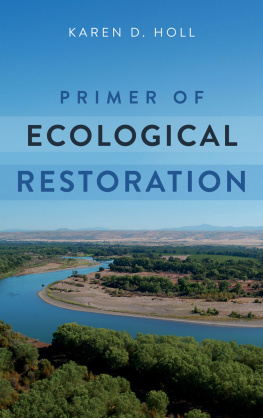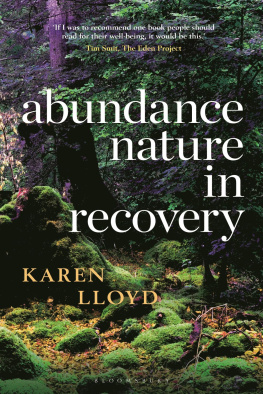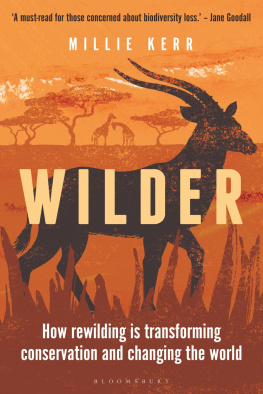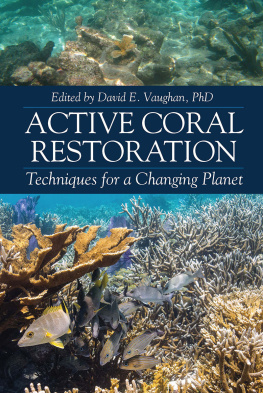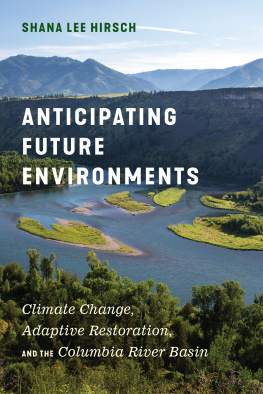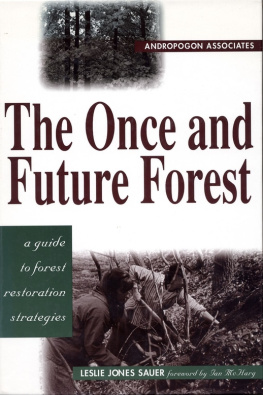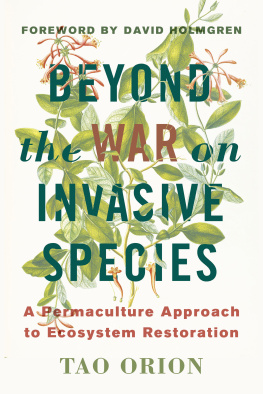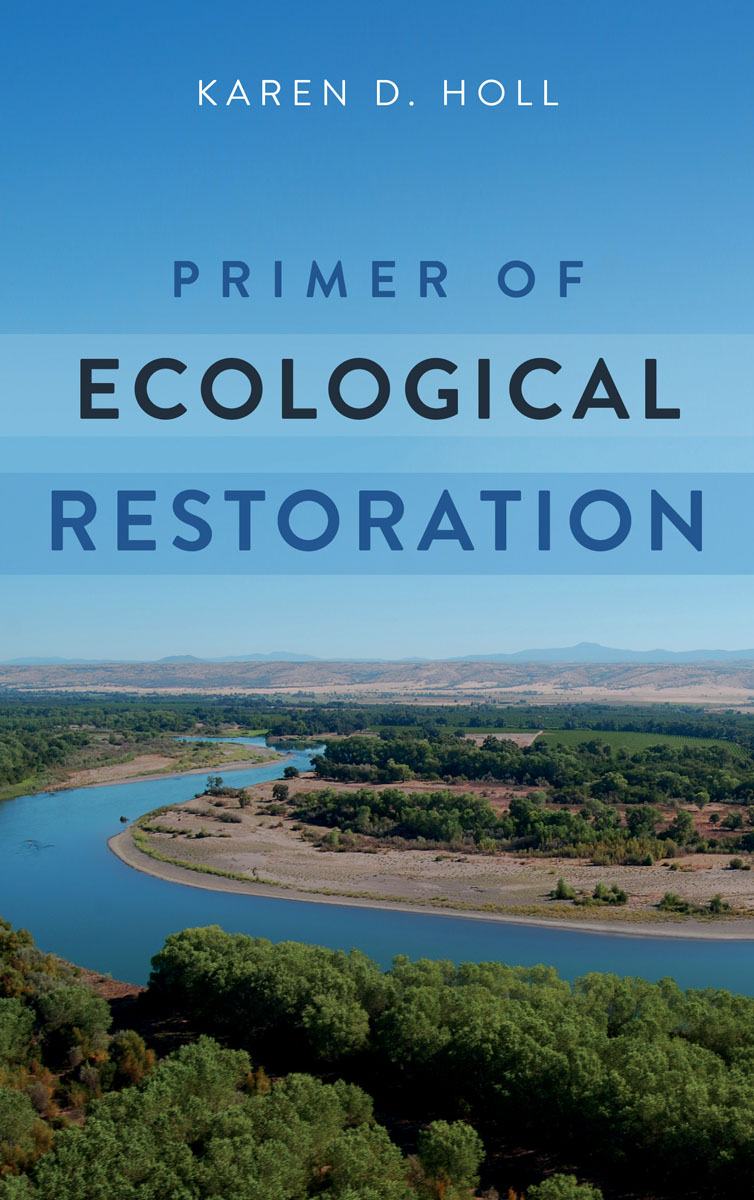
About Island Press
Since 1984, the nonprofit organization Island Press has been stimulating, shaping, and communicating ideas that are essential for solving environmental problems worldwide. With more than 1,000 titles in print and some 30 new releases each year, we are the nations leading publisher on environmental issues. We identify innovative thinkers and emerging trends in the environmental field. We work with world-renowned experts and authors to develop cross-disciplinary solutions to environmental challenges.
Island Press designs and executes educational campaigns, in conjunction with our authors, to communicate their critical messages in print, in person, and online using the latest technologies, innovative programs, and the media. Our goal is to reach targeted audiencesscientists, policy makers, environmental advocates, urban planners, the media, and concerned citizenswith information that can be used to create the framework for long-term ecological health and human well-being.
Island Press gratefully acknowledges major support from The Bobolink Foundation, Caldera Foundation, The Curtis and Edith Munson Foundation, The Forrest C. and Frances H. Lattner Foundation, The JPB Foundation, The Kresge Foundation, The Summit Charitable Foundation, Inc., and many other generous organizations and individuals.
The opinions expressed in this book are those of the author(s) and do not necessarily reflect the views of our supporters.

Island Press mission is to provide the best ideas and information to those seeking to understand and protect the environment and create solutions to its complex problems. Click here to get our newsletter for the latest news on authors, events, and free book giveaways.

Copyright 2020 Karen D. Holl
All rights reserved under International and Pan-American Copyright Conventions. No part of this book may be reproduced in any form or by any means without permission in writing from the publisher: Island Press, 2000 M Street, Suite 650, Washington, DC 20036
Library of Congress Control Number: 2019948297
All Island Press books are printed on environmentally responsible materials.
Manufactured in the United States of America
10 9 8 7 6 5 4 3 2 1
All restoration project costs in this book are listed in US dollars. Measurements are given in metric units. To convert to US equivalents:
1 millimeter = 0.04 inch
1 centimeter = 0.39 inch
1 meter = 3.28 feet
1 kilometer = 0.62 mile
1 hectare = 2.47 acres
Keywords: adaptive management, aquatic, ecosystem, exotic species, fauna, hydrology, invasive species, landform, legislation, monitoring, nonnative species, paying, planning, reclamation, rehabilitation, restoration ecology, restore, revegetation, river, soil, terrestrial, vegetation, water

Contents
To Travis and my students, with hopes for a more sustainable future

Preface
The science and practice of ecological restoration have grown exponentially over the past few decades as we aim to compensate for the negative impacts humans have had on the ecosystems on which we and millions of other species depend. Increasingly, we undertake restoration because of its importance for ensuring our own well-being. With the growth of ecological restoration has come a plethora of resources: thousands of articles in the peer-reviewed and management literature, countless websites describing individual projects, a few general textbooks, and many books focused on restoring specific ecosystem types. The information I review in Primer of Ecological Restoration is not new. Rather, my goal is to provide a broad but succinct introduction to ecological restoration for a few audiences. First, I anticipate that this book will be used as an introductory text for some ecological restoration and restoration ecology courses in which the instructors assign students in-depth readings on specific topics and case studies tailored to the focus of the course. Second, this book could be used as one of a few texts in courses on conservation biology and resource management where ecological restoration is not the only topic covered. Third, this book should be of interest to natural resource managers and a more general audience who want a short introduction to ecological restoration. To that end, I have kept specialized jargon to a minimum and define terms in both the text and the glossary.
Restoring ecosystems requires an interdisciplinary background. Understanding the ecology and natural history of the ecosystem being restored and knowing appropriate restoration methods are essential. But, as any restoration practitioner knows, successful project implementation requires familiarity with a host of other topics, including but not limited to managing stakeholder involvement and public outreach; experience with planning, goal setting, and monitoring; and knowledge of relevant legislation, permitting processes, and funding sources. This book could not possibly discuss all these topics in detail while achieving the goal of brevity, so instead I provide an overview of key points and illustrate them with brief examples. These different topics are necessarily in separate chapters in this book, but they must be synthesized when designing and implementing a restoration project. Concepts are integrated here by cross-references to chapters and several online case studies that provide detailed information and that integrate various themes illustrated by the project.
The old saying that a picture is worth a thousand words is true for ecological restoration. There is no substitute for seeing before and after photos of projects and visiting restoration sites in person. Nonetheless, because including numerous color photos in the book would have greatly increased the cost and hence made the book less accessible to a broad audience, I chose instead to use selected diagrams and tables in the book and to incorporate photos in the online case studies. Listed on the books website (islandpress.org/restoration-primer) are links to a few of the many restoration project websites, photos, and videos available on the internet, and I encourage you to visit restoration projects in your area.
This book is not intended as a thorough guide of how to restore specific ecosystem types, so readers who plan to work in the field of ecological restoration will want more in-depth resources on specific topics. To this end, I have provided short reading lists at the end of each chapter. On the website, I also provide questions for reflection and discussion that ask readers to apply the ideas presented in the book to a restoration project of their choice.
As with any book, the content reflects the biases and experiences of the author. Although I am trained as an ecologist, I have worked closely with political scientists, economists, and natural resource managers over my career. I am a professor at a research university, where I have taught an interdisciplinary course on restoration ecology and researched ecological questions underlying restoration for more than two decades. I have advised, but do not have extensive experience implementing, large restoration projects. I have worked in a range of terrestrial ecosystems in several regions, including hardwood forests in the eastern United States; grassland, chaparral, and riparian forest ecosystems in California; and tropical rain forests in various countries in Latin America. My knowledge of restoration lake and wetland ecosystems is primarily from the work of others. I am committed to bridging the divide between academic and management communities so that scientific research is best designed to inform and improve on-the-ground restoration projects, a commitment that is reflected in the contents of this book. Finally, I am passionate about educating the next generation of restoration ecologists, a goal I hope this book will help fulfill.
Next page
